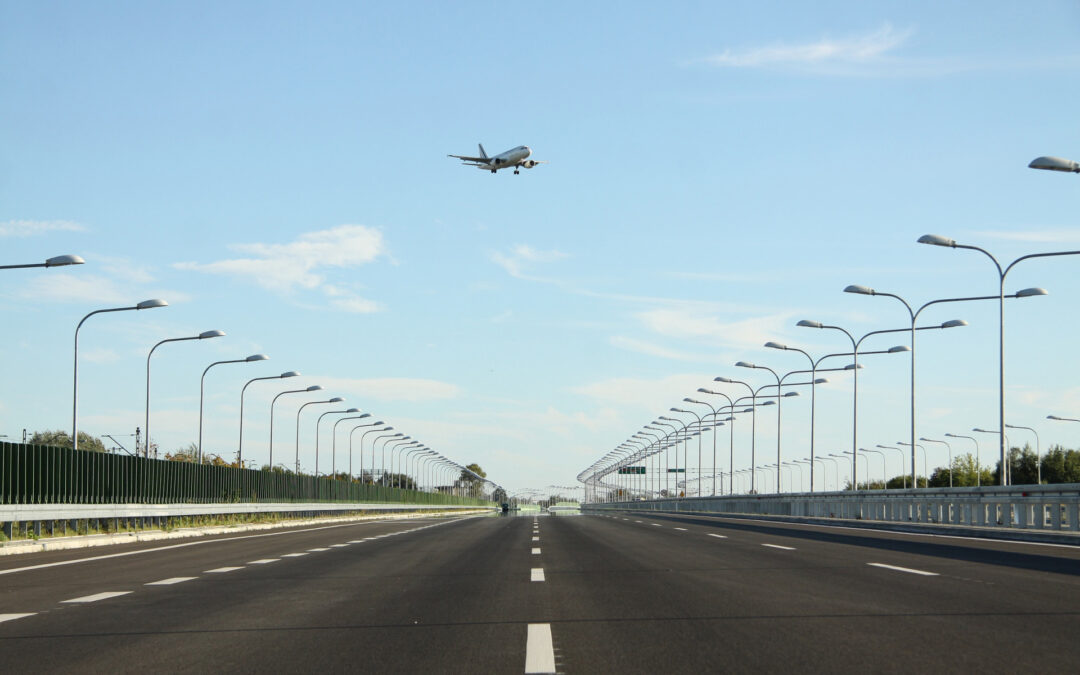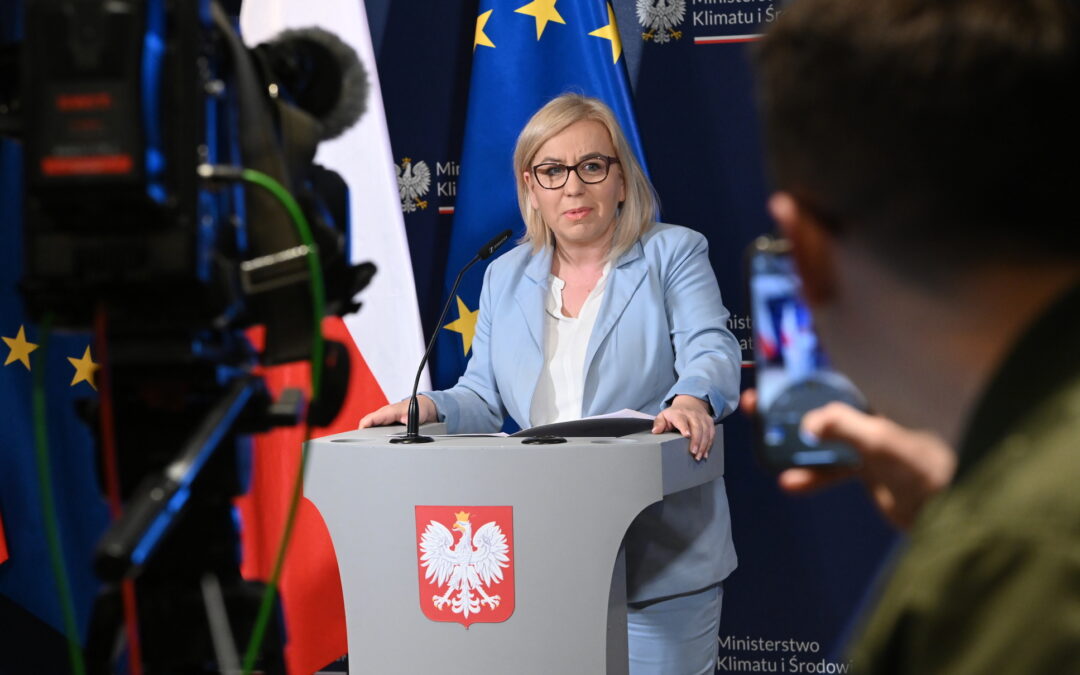By Maria Wilczek
The worst year in aviation history has put many of Poland’s high-flying plans on standby, but the government still has lofty ambitions for the country to join Europe’s largest players.
Poland was one of the first countries in Europe to suspend all international air connections due to the pandemic, taking the decision in mid-March. Flights resumed in June, but a list of no-go countries continued to limit travel to big tourist destinations, including France and Spain. Amid the uncertainty, many Poles have plumped for domestic holidays instead.
As a result, Polish airports will see 50-70% less traffic in 2020. Passenger numbers will take years to rebound. The International Air Transport Association (IATA) estimates that travel may not return to pre-pandemic levels until 2024.
Poland’s flag carrier, state-owned LOT, is likely to dip into the red this year and may need government support to plug the holes in its balance sheets. It has already had to step back from a planned takeover of a struggling German rival.
Yet despite the financial nosedive and uncertainty about future flights, the Polish government is still pushing ahead with construction of a new “mega-airport” in central Poland, which it intends to become a regional hub. And plans for a Central European airline may soon be back on the table.
Hitting the ground
LOT has long had ambitions to outgrow its regional heft and join the European league. In recent years, it has pushed for quick growth, tripling its number of international connections between 2016 and 2019. Passenger numbers have also shot up, from 4.3 million in 2015 to 10 million in 2019. The airline’s available seat kilometres, a measure of capacity, has steadily increased, jumping by a fifth last year.
The carrier has also set its sights on further-flung destinations, recently launching connections with Miami, New Delhi and Sri Lanka. Numbers of long-haul passengers rose 30.4% year-on-year in 2019, compared to just 4.7% for domestic routes, reports Business Insider.
Yet the push for growth has left it without much of a buffer against the current crisis. “For the past three or four years, LOT was growing quickly and profitably,” explains Dominik Sipiński, a transport expert at Polityka Insight, a think tank. “But the bulk of its profits were reinvested into growth, with very little safeguarding for a crisis.”
Data source: Pasażer.com
Last week, LOT, which is fully owned by Poland’s treasury, put in a request for 4.5 billion zloty (€1 billion) of public financing to help cover losses incurred during the coronavirus pandemic, reports Money.pl. The European Commission will have to approve the relief package.
According to some experts, due to rising fuel and leasing costs the carrier was likely to end 2020 with a loss regardless of the pandemic. Its 2019 earnings report released last week boasted an operating profit of 91.9 million zloty (€20.5 million). Yet this means the airline made just 10 zloty profit per passenger, calculates Business Insider. With an operating margin of 1.2%, that makes Poland’s carrier much less efficient than its European rivals (5.1% for Lufthansa and 13.3% for Ryanair).
“In a PR sense, the pandemic has been a blessing for LOT,” says Sipiński. “It has allowed the carrier to hide the fact that it was not prepared for a crisis. It’s easier for LOT to point to Lufthansa and Air France and say that everyone is getting state aid.”
Taking off again
Earlier this year, LOT’s owner, Polska Grupa Lotnicza (PGL), was forced to abandon plans to buy German rival Condor. In January, PGL had offered the charter airline, whose previous owner went into administration, a lifeline, also promising to repay its €380 bridging loan from the German authorities.
“This expansion of LOT is really symbolic,” said Poland’s prime minister, Mateusz Morawiecki, announcing the deal. “In the past, foreign companies bought up precious Polish assets. It fills my chest with pride that Polish companies can…effectively take over foreign assets.”
Since the Law and Justice (PiS) party came to power in 2015, LOT has become “more politicised”, says Sipiński. The decision to scrap the agreement in April thus came as a blow to the government, which has backed the flag carrier’s strategy of becoming the region’s largest.
State-owned Polish Aviation Group (PGL) has announced it is withdrawing from the purchase of German airline Condor that was agreed in January.
Sources say the German government wasn't willing to offer the financial guarantees PGL wanted https://t.co/db6at4PJII
— Notes from Poland 🇵🇱 (@notesfrompoland) April 13, 2020
Yet, the government appears to have alternative avenues for growth. Last week, Lidové Noviny, a Czech newspaper, reported that politicians and managers are mulling over the creation of a single Central European airline to shake up Europe’s aviation industry.
The new entity would be based around LOT. The Polish carrier already operates from Budapest, and is reportedly considering Prague as a new major hub. Future plans would also include flights from Bratislava, which can attract passengers from nearby Vienna.
An earlier incarnation of the project was proposed sixteen years ago. At the time, Slovakia’s flag carrier, Slovak Airlines, had just ceased operations. Since then, Hungary’s national airline, Malév, has also collapsed, making the prospect of a joint venture potentially more attractive.
“A gateway to the east”
Meanwhile, planning for a 10 billion zloty (€2.2 billion) megaproject – the Solidarity Transport Hub (CPK), which will combine a new airport with railway interchanges and road connections – has continued. Construction is due to begin in 2023, with an opening pencilled in for 2027.
The airport, located between Warsaw and Łódź in central Poland, is expected to initially serve 45 million passengers a year, which would put it in a similar league to London Gatwick (which had 46.5 million passengers last year) and Munich (48 million).
The government’s aim is for it to eventually expand to 100 million passengers a year, which on last year’s figures would have made it the second busiest airport in the world alongside Beijing and behind only Atlanta. Warsaw’s main airport currently has an annual capacity of 20 million passengers.
✈️🚆 Centralny Port Komunikacyjny. Program dla 🇵🇱 Polski | Zobacz spot ⬇️⬇️⬇️ pic.twitter.com/a558HXJsER
— Centralny Port Komunikacyjny (@STH_Poland) June 3, 2020
LOT’s CEO, Rafał Milczarski, has said that the modern airport will help the airline reach its goal of tripling passenger numbers and expanding long-haul flights to the US and Asia, according to Bloomberg.
It would shift Poland away from its current large number of smaller regional airports towards a more centralised model, with the aim for CPK to also become an important regional hub.
“Central Europe needs a proper aviation hub,” says Milczarski. Ministers have lauded CPK as “the biggest undertaking in the modern history of Poland” and “the gateway from the EU to the east”.
With the onset of the crisis, the government has also presented the flagship project as a way out of the economic rut caused by the pandemic. A new report released on Tuesday by Kearney, a consultancy, estimates that it will create 290,000 jobs between 2028 and 2040.
“I am sure we can afford to achieve CPK, said President Andrzej Duda during his recent re-election campaign. “Just as we defeated communism, we will defeat the corona-crisis.”
“The massive, ambitious investment will place us high up on the global scale, and show what a great nation we are,” he continued, speaking in a television studio with a flashing “CPK” backdrop. “This will be a great opportunity for business and development, which we will give to our children and grandchildren for decades.”
Opublikowany przez Kancelaria Prezydenta RP Środa, 3 czerwca 2020
The opposition has, however, criticised the investment as an unnecessary expense given the existence of four airports in Warsaw’s vicinity: the central Okęcie, Modlin and Radom, as well as in nearby Łódź. They have also attacked the high salaries of the project’s board.
“I see more megalomaniacal self-aggrandisement than any realistic analysis in this project,” said Marcin Święcicki, a former Warsaw mayor, quoted by Bloomberg.
Ryanair boss Michael O’Leary – whose airline was, until this year at least, the largest in Poland by passenger numbers – has called the project “stupid” and a “shiny cathedral in the middle of nowhere”. It has also drawn opposition from residents of a village which would be bulldozed to make way for the new transport hub.
Experts appear divided on the economic sense of the megaproject. “We think of LOT and CPK in pre-pandemic terms, without reflecting on how the pandemic changes the underlying conditions,” says Sipiński. The pandemic may have normalised remote work, reducing demand for business travel. It is also hard to predict how leisure travel will evolve.
Sipiński, however, also believes that the shake-up of the industry could be a golden opportunity for Poland’s new hub: “CPK might be the first major airport built according to post-pandemic specifications. It would be a shame to waste that chance by rushing.”
He suggests that the government take half a year out to “rethink” the transport hub, accounting for new travel patterns and technological progress. These could include hydrogen fuel infrastructure, drone integration or state-of-the-art connections between trains and planes.
Terminal condition
The development of CPK, along with improved railway and road connections, may also make smaller local airports redundant. The pandemic will have sped up the process.
There are 14 operational airports in Poland, with an additional dormant one in Radom. Many of the smaller ones mainly serve Poles travelling to the UK and the Nordics for work.
Even before the pandemic, many of these had struggled. Losses for airports in 2019 amounted to 8 million zloty (€1.8 million) for Bydgoszcz in northwestern Poland, 29 million zloty (€6.5 million) for Łódź, and 27 million zloty (€6 million) for Lublin, reports Polityka.
Many of these facilities are “political projects” supported by local governments, which see them as a mark of “dignity” for their region, rather than business ventures, says Sipiński.
For example, since opening in 2012, Lublin airport has already recorded a dip in passenger numbers and the withdrawal of Wizz Air last year after train and highway connections with Warsaw improved. “It’s not about whether an airport is needed, or will make money, but whether Lublin deserves an airport,” says Sipiński.
The pandemic has made the situation for some local airports even more untenable. Meanwhile, the national government has dragged its feet in providing a relief package of 142 million zloty (€32 million) to smaller airports, pointing to delayed talks with the EU. It is unclear how much of the funding will eventually trickle down, and when.
“We have a few regional airports which would have had large problems even without the pandemic”, said Marcin Horała, the deputy minister for infrastructure, charged with overseeing the CPK project, in September. As they struggle, though, the government already has its mind on higher things.
Main image credit: Centralny Port Komunikacyjny/Twitter

Maria Wilczek is deputy editor of Notes from Poland. She is a regular writer for The Times, The Economist and Al Jazeera English, and has also featured in Foreign Policy, Politico Europe, The Spectator and Gazeta Wyborcza.




















